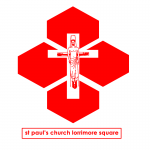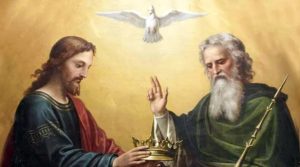Sunday before Lent

The Transfiguration
Luke 9:28-36
The Transfiguration
28 About eight days after Jesus said this, he took Peter, John and James with him and went up onto a mountain to pray. 29 As he was praying, the appearance of his face changed, and his clothes became as bright as a flash of lightning. 30 Two men, Moses and Elijah, appeared in glorious splendor, talking with Jesus. 31 They spoke about his departure,[a] which he was about to bring to fulfillment at Jerusalem. 32 Peter and his companions were very sleepy, but when they became fully awake, they saw his glory and the two men standing with him. 33 As the men were leaving Jesus, Peter said to him, “Master, it is good for us to be here. Let us put up three shelters—one for you, one for Moses and one for Elijah.” (He did not know what he was saying.)
34 While he was speaking, a cloud appeared and covered them, and they were afraid as they entered the cloud. 35 A voice came from the cloud, saying, “This is my Son, whom I have chosen; listen to him.” 36 When the voice had spoken, they found that Jesus was alone. The disciples kept this to themselves and did not tell anyone at that time what they had seen.
A Homily on the Transfiguration by Father Wayne Baron
When I entered this magnificent church for the first time, I was immediately struck by this huge and impressive wood carving behind the altar, which I took to be a daring representation of the crucifixion as portrayed in the gospel according to St John, which is rather different from the way it is portrayed in the other gospels. In John’s account, there is no agony or weakness; instead, Jesus mounts the cross with the serene confidence of a warrior mounting a chariot to fight a battle he knows he will win. And, at the end, there is no cry of desolation but, instead, a triumphant shout, which, in the original Greek, is τετέλεσται. This is usually translated as “It is finished,” but this is very weak; the Greek word contains the stem τέλε- which suggests a specific end, target, or goal, so a better translation would be something like: “My task has been completed,” or “My purpose has been fulfilled,” or “My mission has been accomplished.” But this is really mysterious because, as soon as he has said this, Jesus dies, and, at this point, as far as his disciples and we are concerned, there is no completion, fulfilment or accomplishment, just death, failure, and loss.

When I had walked up to the carving and looked at it closely, I realised that I was wrong; I saw that it is in fact a double image, simultaneously representing Jesus’s crucifixion and his resurrection. I noticed the gruesomely distorted and shrivelled remains of a human body still nailed to the cross and realised that the supremely calm and serene figure of Christ, looking upward and wearing a victor’s crown, is not really attached to the cross but is leaving it behind. This is an image of the Christ just risen in all his glory, looking upward and awaiting his ascension into heaven in forty days’ time. And I was immediately struck by how appropriate this image is as the focal point of a church whose holy patron is St Paul, St Paul, whose letters contain some of the most influential and important theology in the NT and who did the most significant work in beginning to explore the τέλος, the purpose, task, or mission that Christ accomplished on the cross, and in exploring the deep consequences of this for us and for the whole of creation. It is this intense and passionate construal of Christ’s mysterious work, his τέλος, that St Paul elaborated on the basis of his encounter with the risen, glorious Christ on the Damascus road, and the effects that this decisive experience and relationship had on the rest of his life, that this magnificent carving, it seems to me, manages to condense with its striking imagery, and it therefore also provides us with a condensed summary of what our readings this morning are also pointing to.



